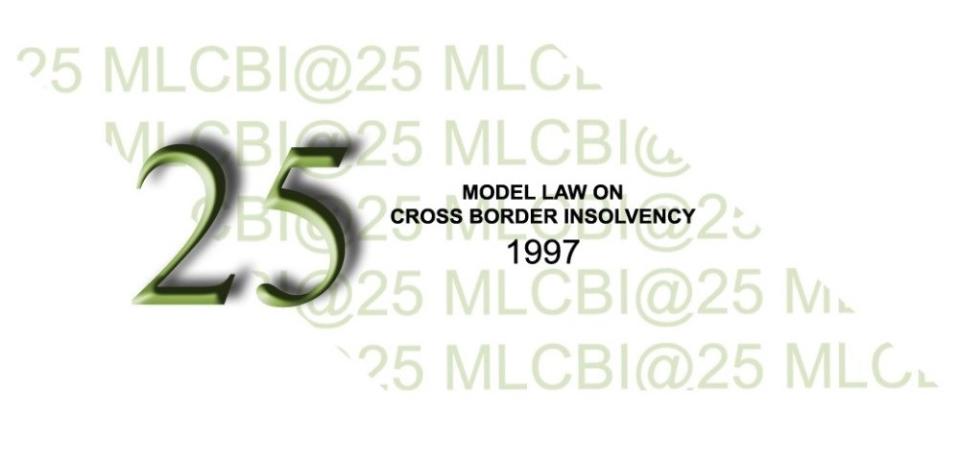UNCITRAL Model Law on Cross-Border Insolvency (1997)
Date of adoption: 30 May 1997
Purpose
The Model Law is designed to assist States to equip their insolvency laws with a modern legal framework to more effectively address cross-border insolvency proceedings concerning debtors experiencing severe financial distress or insolvency. It focuses on authorizing and encouraging cooperation and coordination between jurisdictions, rather than attempting the unification of substantive insolvency law, and respects the differences among national procedural laws. For the purposes of the Model Law, a cross-border insolvency is one where the insolvent debtor has assets in more than one State or where some of the creditors of the debtor are not from the State where the insolvency proceeding is taking place.
Relevance to international trade
Although the number of cross-border insolvency cases has increased significantly since the 1990s, the adoption of national or international legal regimes equipped to address the issues raised by those cases has not kept pace. The lack of such regimes has often resulted in inadequate and uncoordinated approaches to cross-border insolvency that are not only unpredictable and time-consuming in their application, but lack both transparency and the tools necessary to address the disparities and, in some cases, conflicts that may occur between national laws and insolvency regimes. These factors have impeded the protection of the value of the assets of financially troubled businesses and hampered their rescue.
Key provisions
The Model Law focuses on four elements identified as key to the conduct of cross-border insolvency cases: access, recognition, relief (assistance) and cooperation.
(a) Access
These provisions give representatives of foreign insolvency proceedings and creditors a right of access to the courts of an enacting State to seek assistance and authorize representatives of local proceedings being conducted in the enacting State to seek assistance elsewhere.
(b) Recognition
One of the key objectives of the Model Law is to establish simplified procedures for recognition of qualifying foreign proceedings in order to avoid time-consuming legalization or other processes that often apply and to provide certainty with respect to the decision to recognize. These core provisions accord recognition to orders issued by foreign courts commencing qualifying foreign proceedings and appointing the foreign representative of those proceedings. Provided it satisfies specified requirements, a qualifying foreign proceeding should be recognized as either a main proceeding, taking place where the debtor had its centre of main interests at the date of commencement of the foreign proceeding or a non-main proceeding, taking place where the debtor has an establishment. Recognition of foreign proceedings under the Model Law has several effects - principal amongst them is the relief accorded to assist the foreign proceeding.
(c) Relief
A basic principle of the Model Law is that the relief considered necessary for the orderly and fair conduct of cross-border insolvencies should be available to assist foreign proceedings. By specifying the relief that is available, the Model Law neither imports the consequences of foreign law into the insolvency system of the enacting State nor applies to the foreign proceedings the relief that would be available under the law of the enacting State. Key elements of the relief available include interim relief at the discretion of the court between the making of an application for recognition and the decision on that application, an automatic stay upon recognition of main proceedings and relief at the discretion of the court for both main and non-main proceedings following recognition.
(d) Cooperation and coordination
These provisions address cooperation among the courts of States where the debtor's assets are located and coordination of concurrent proceedings concerning that debtor. The Model Law expressly empowers courts to cooperate in the areas governed by the Model Law and to communicate directly with foreign counterparts. Cooperation between courts and foreign representatives and between representatives, both foreign and local, is also authorized. The provisions addressing coordination of concurrent proceedings aim to foster decisions that would best achieve the objectives of both proceedings, whether local and foreign proceedings or multiple foreign proceedings.
Additional information
The Model Law is accompanied by a Guide to Enactment and Interpretation. This is directed primarily to executive branches of Governments and legislators preparing the necessary enacting legislation, but it also provides useful insight for those charged with interpretation and application of the Model Law, such as judges, and other users of the text, such as practitioners and academics.


